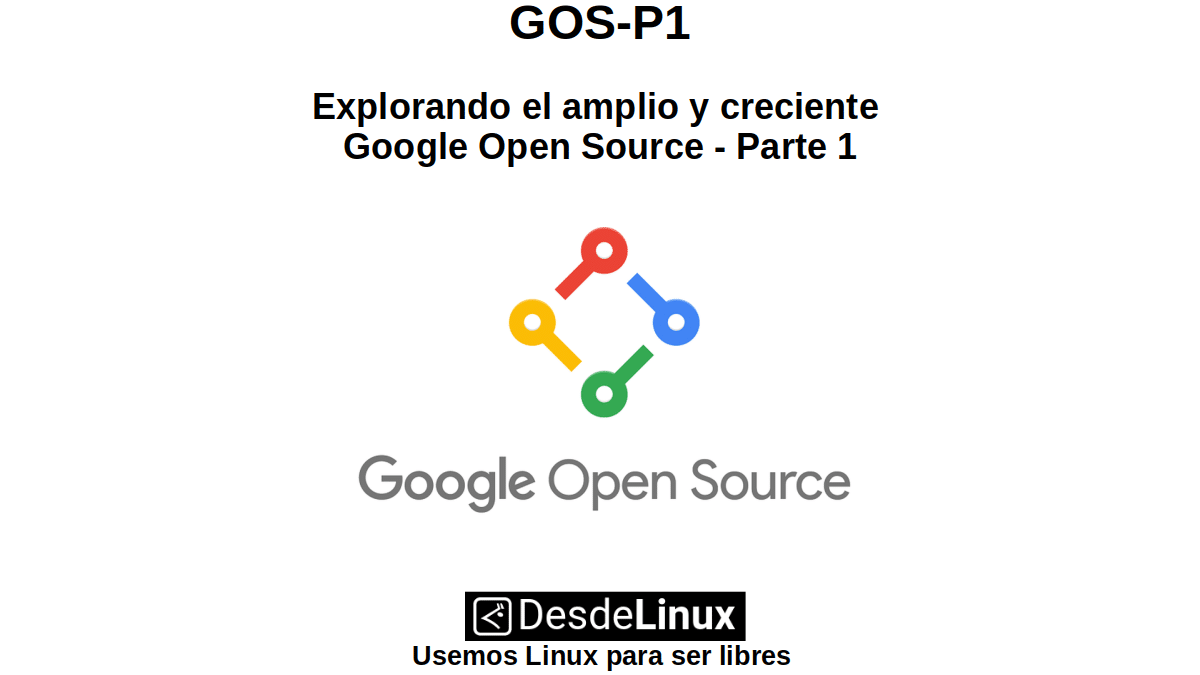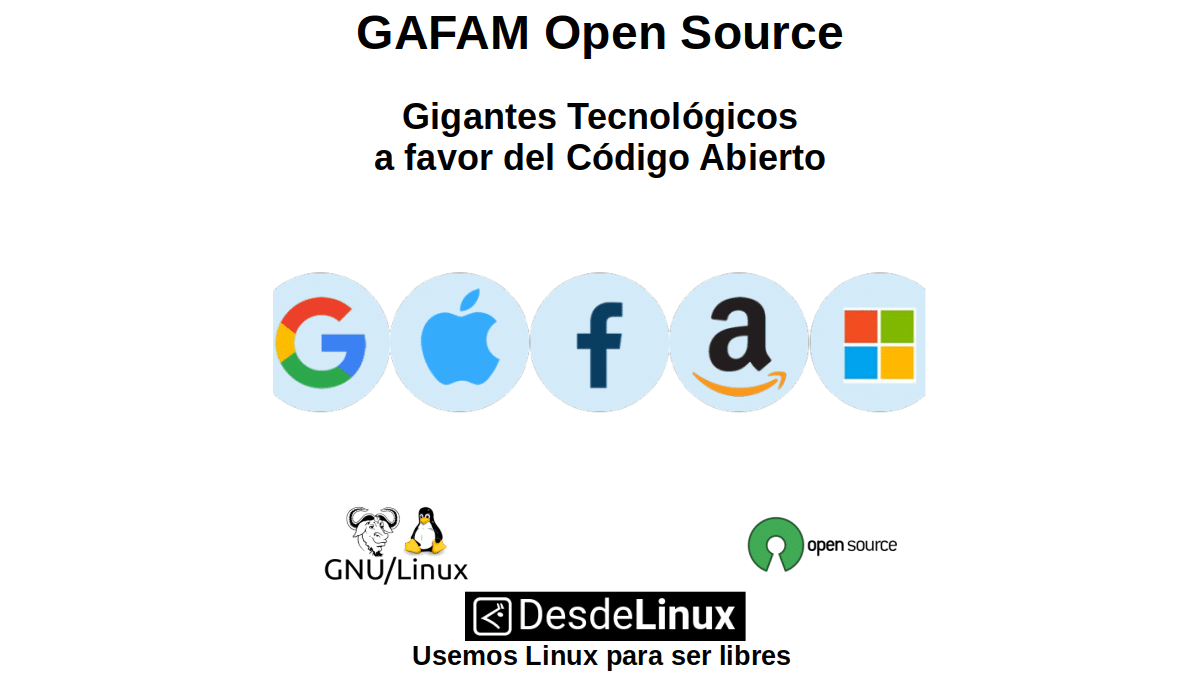
GOS-P1: Exploring the vast and growing Google Open Source - Part 1
In a previous article we commented on the importance and overcrowding of the Open Source, which is expanding every day not only between the people and communities (groups) but between public and private organizations.
And in it, we mention in a special way the 5 Tech Giants from the group known as GAFAM. Which each have their own public repository of software for Open Source. Therefore, in this first delivery We will begin a small review of some of the applications contained therein, starting with the Google Open Source.

GAFAM Open Source: Technological Giants in favor of Open Source
For those interested in exploring our previous post related to the topic, you can click on the following link, after finishing reading this publication:
"Today, both public and private organizations are progressively moving towards a greater integration of Free Software and Open Source to their business models, platforms, products and services. In other words, free and open technologies are increasingly an important part of the way of working in and out of them, for the benefit of their owners, clients or citizens." GAFAM Open Source: Technological Giants in favor of Open Source


GOS-P1: Google Open Source - Part 1
Applications of the Google Open Source
abseil
Abseil is a collection of open source library code. Abseil's C ++ code is designed to augment the standard C ++ library. In some cases, Abseil provides parts that are missing from the C ++ standard; in others, Abseil provides alternatives to the standard. Abseil does not claim to be a competitor to any standard library code. see more at: Google Open Source, GitHub y Official Web.
AdaNet
AdaNet is a fast and flexible AutoML with guarantees of learning. In other words, it is a lightweight TensorFlow-based framework for high-quality model machine learning with minimal expert intervention. It uses the AdaNet algorithm from «Cortes et al. 2017 »to learn the structure of a neural network as a set of subnets while providing learning guarantees. Importantly, AdaNet provides a general framework not only for learning the architecture of a neural network, but also for learning how to assemble for even better models. see more at: Google Open Source, GitHub y Official link.
Android
Android is an Operating System and software stack created for a number of devices with different form factors, such as phones, tablets, wearables (w), televisions, cars and connected devices. Android's primary goals are to create an open platform available for carriers, OEMs and developers to bring their ideas to life and deliver a real-world successful product that enhances the mobile experience for users. see more at: Google Open Source, Google Source y Official link.
Angular
Angular is a web application framework for mobile, desktop and web devices. Hence, it is a development platform that aims to make web development feel effortless, focused on developer productivity, speed, and testability. Applications built with Angular can be deployed on desktop and mobile devices such as native websites and applications. see more at: Google Open Source, GitHub y Official Web.
Apache Beam
Apache Beam is a unified model for defining and running data processing pipelines. In other words, it provides an advanced unified programming model, allowing you to implement streaming and batch data processing jobs that can run on any runtime. It's easy to use with Apache Apex, Apache Flink, Apache Spark, and Google Cloud Dataflow, among other distributed processing backends. Apache Beam was developed from a number of internal Google technologies, such as MapReduce, FlumeJava, and Millwheel. Google donated the code to the Apache Software Foundation in 2016, and Googlers continue to contribute regularly to the project. see more at: Google Open Source, GitHub y Official Web.

Conclusion
We hope this "useful little post" about this first exploration of «Google Open Source», offers an interesting and wide variety of open applications developed by the Technological Giant of «Google»; and is of great interest and utility, for the entire «Comunidad de Software Libre y Código Abierto» and of great contribution to the diffusion of the wonderful, gigantic and growing ecosystem of applications of «GNU/Linux».
For now, if you liked this publicación, Do not stop share it with others, on your favorite websites, channels, groups or communities of social networks or messaging systems, preferably free, open and / or more secure as Telegram, Signal, Mastodon or another of Fediverse, preferably. And remember to visit our home page at «DesdeLinux» to explore more news, as well as join our official channel of Telegram from DesdeLinux. While, for more information, you can visit any Online library as OpenLibra y jedit, to access and read digital books (PDFs) on this topic or others.